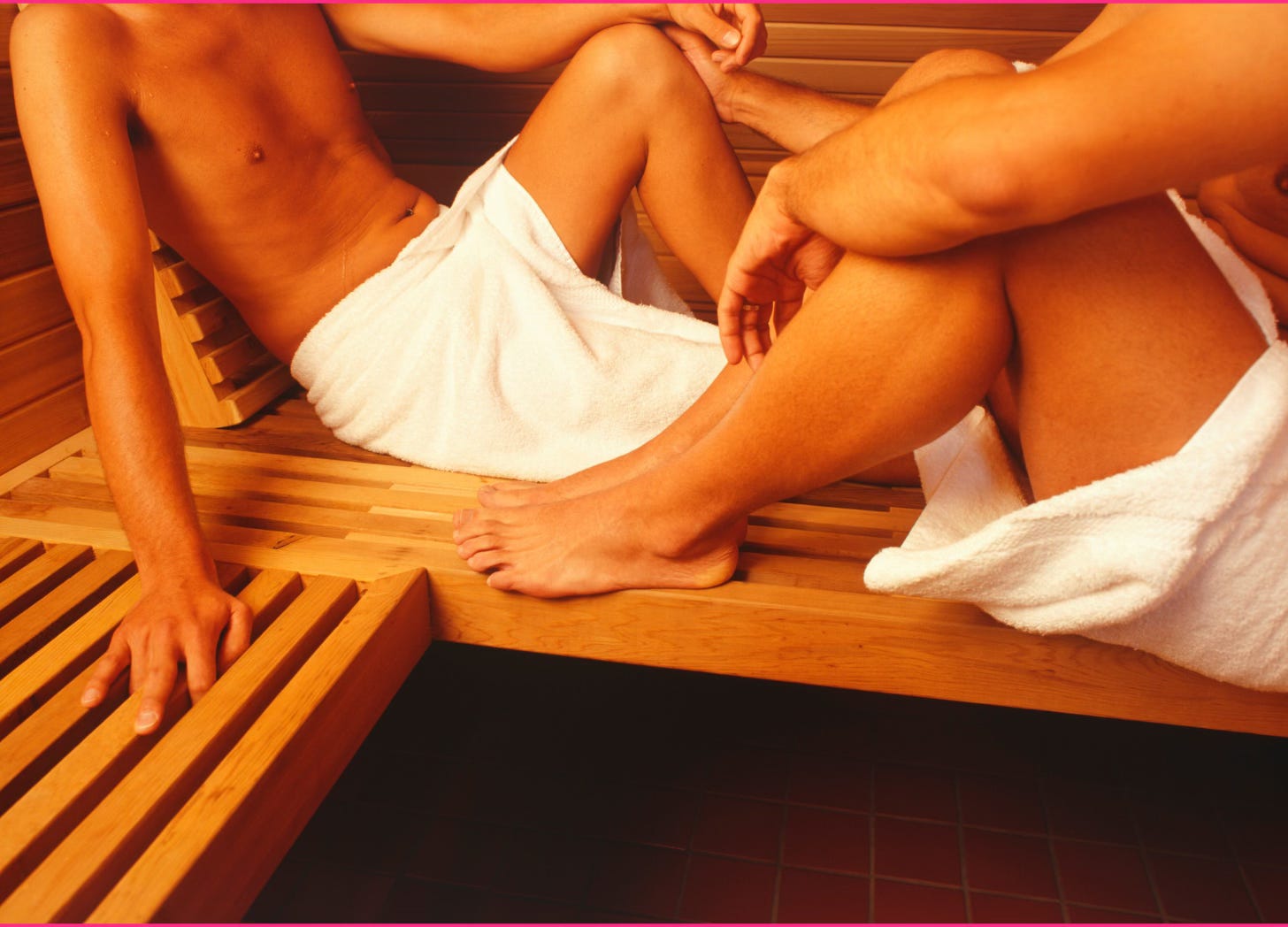Close Encounters of the Conservative Kind
What people say when they think no one is listening
Before we dive in: Rey and the Archive exists because of paid subscribers. Your support helps me write, research, show up, and build the kind of queer community I wish I had growing up. If you value art, queer joy, resources, and community stories, consider subscribing for $5/month. It really does make a difference and keeps this work going. That’s the price of an iced coffee on a hot summer day.
🔒 Up next for paid subscribers: I’ll be picking up where I left off in the series, Life of a Trans Man Lesbian, diving deeper into my gender journey and how it intersects with my lesbian identity.
Background
On Sunday morning, I overheard a man say, “These young kids would rather protest all day than work.”
My ears perked up, lifting my sweat-covered face to see two men talking among themselves inside the Equinox sauna. We’ll call them Red and Blue, like in the Pokémon games. I was sitting across from them, with my top surgery chest. I spent my Sunday morning unwinding after my gym workout as usual in the dry heat. Eager to hear more, my ears honed in on their conversation as I continued to breathe deeply.
Blue responded, “I came into this country with nothing, and they don’t know what hard work is. They need to go to college and make something of themselves, stop bothering people with this DEI sh*t.”
I couldn’t help but roll my eyes as both men continued to affirm each other’s political beliefs. It wasn’t long before the conversation shifted to talking about “overly sensitive people,” a phrase they used to describe anyone who was not a white, able-bodied, and cisgender man.
Red wiped the sweat off his forehead with a white towel, his voice in a low whisper, “Gotta be careful, man. Especially where you work—it ain’t like in the 90s where people can be open to learning. These days, you can’t even ask questions anymore without a queer or Black person jumping down your throat when you make a mistake.”
Having heard enough, I got up from my seat and headed off to the showers.
Changing Our Approach
As a professional who does diversity, equity & inclusion (DEI) consulting, I often hear from my peers during their trainings that understanding diverse human experiences (e.g., Trans 101 training or a panel for Black History Month) is so important. Sitting at the intersection of being both trans and an immigrant, I can intuitively understand why learning about trans people or non-binary people is crucial. These experiences and concepts weren’t just for me to know; I had to live through these experiences and grasp the nuances behind them.
I understood without being told why DEI is important, because I have seen how my multiple marginalized identities affect how I navigate the world. But for people who benefit from being white, able-bodied, and cisgender—like these men in the sauna—it was clear from their conversation that these were the topics they discussed when out of earshot of queer and BIPOC people.
Yet there I was, a trans BIPOC person with top surgery scars on full display, sitting in the sauna overhearing their conversation.
Like I was undercover, yet society swears that they can always tell who is trans or not.
If that were true, I wouldn’t have been able to fly under the radar as well as I have out here in these men’s locker rooms.
Moving Forward
We’ve come a long way since the 1990s. However, we still have a way to go before people from all marginalized identities achieve equity in all aspects of life, whether that is being gainfully employed or having access to quality healthcare. Equity looks different for everyone, and what sets it apart from equality.
After reflecting on the overheard conversation, these were some of my takeaways:
These men are surrounded by people who come from generational wealth.
They aren’t aware of how race and other marginalized identities negatively impact aspects of their lives (professional or otherwise).
Or they may know, but believe anyone can pull themselves up by their bootstraps and succeed no matter one’s circumstances.
They likely had negative experiences with the facilitators who led DEI initiatives at their workplaces.
What seemed like a simple sauna conversation reminded me how much work we still have to do. I’m not sharing this to shame anyone, but to reflect on the importance of knowing who we are speaking to when we design DEI initiatives. If we want to bridge gaps and reach those who might be swayed, we need to adapt our approach and meet them at the starting line. Too often, we try to rush understanding by jumping to X, Y, and Z when some are still figuring out A, B, and C.
If you’ve ever had to educate others about your lived experience, whether you are a trans person, a disabled person, or someone navigating other forms of marginalization, what approaches have worked for you? And if something hasn’t worked, what would you do differently next time?
I’d love to hear your thoughts.



